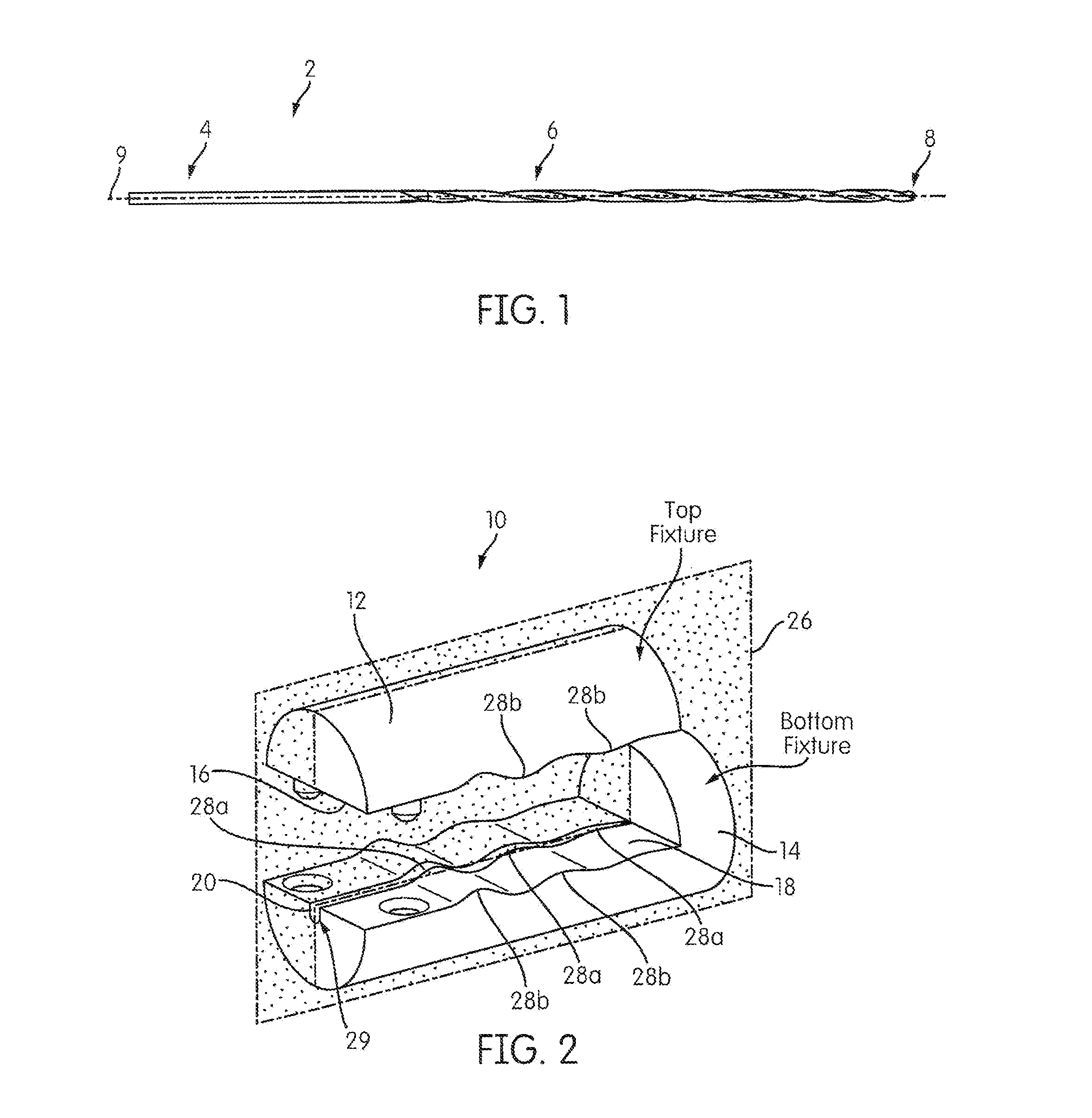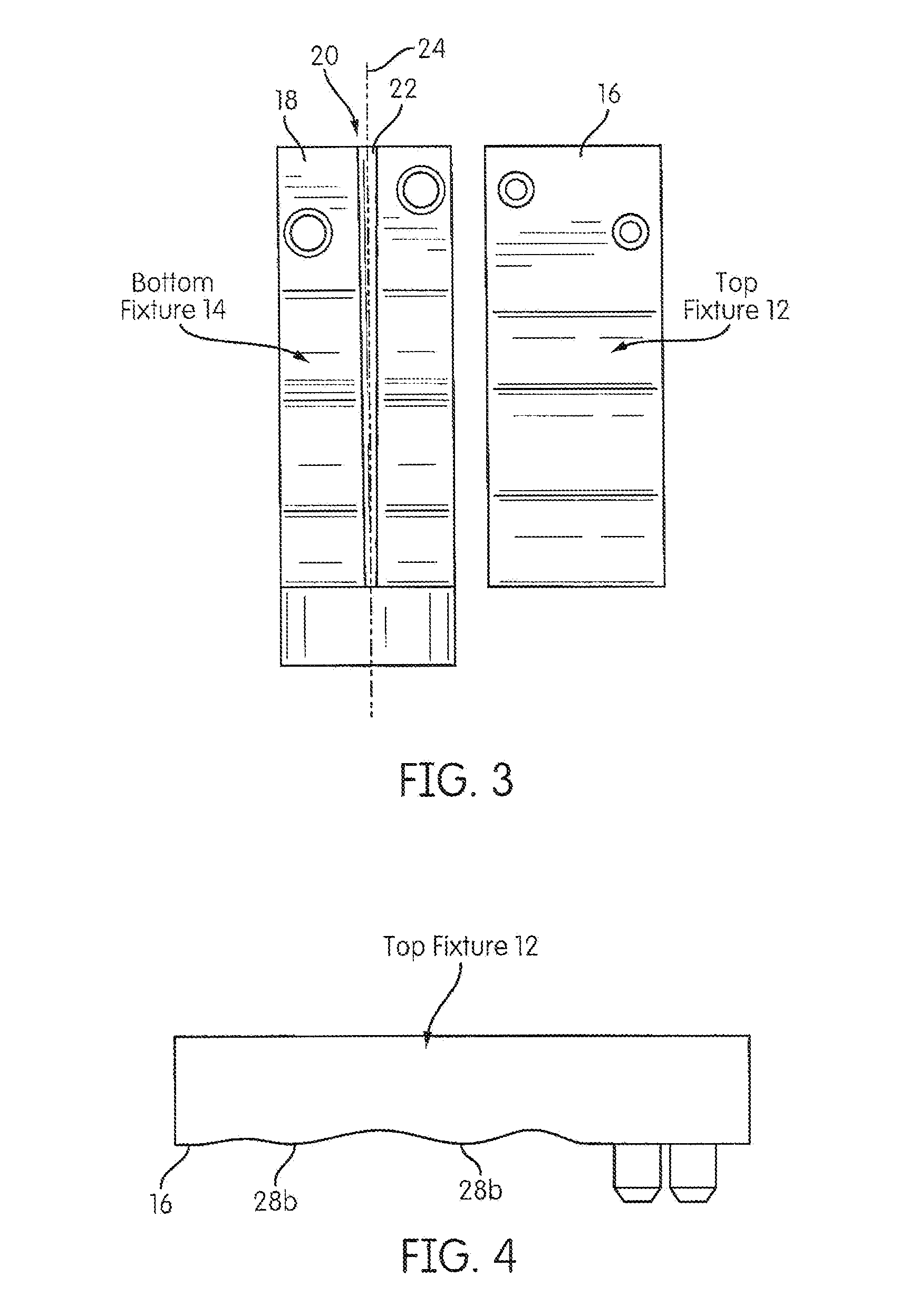Process for Producing a Shape Memory Spiral Rotary File
a spiral rotary file and shape memory technology, applied in the direction of shaping tools, teeth capping, teeth nerve/root treatment implements, etc., can solve the problems of less cutting efficiency, less efficient cutting, and more susceptible to breaking within the canal, so as to prevent the damage of the fluting, and reduce the effect of cutting efficiency
- Summary
- Abstract
- Description
- Claims
- Application Information
AI Technical Summary
Benefits of technology
Problems solved by technology
Method used
Image
Examples
Embodiment Construction
[0030]Previous shape-setting method have been described in co-pending application U.S. Ser. No. 13 / 300,506, which is herein incorporated by reference for all purposes. It is appreciated that the method for forming the shape-setting file generally includes inserting a file into a fixture that includes deformation members for deforming at least one portion of the file. The file 2 may include a handle portion 4, a shaft portion 6 with a tip 8. As seen in FIG. 1. The starting shape of the file is generally linear and extends along a file axis 9. However, other starting shapes are contemplated such as a two-dimensional (2D) shape. The present invention utilizes at least one set fixture (for starting files having a 2D shape) and preferably at least two different shape set fixtures to bend and set the geometry of the file to the desired finished shape (e.g., a three-dimensional (3D) shape. It is appreciated that the fixture(s) is heated to a temperature of at least about 200° C., at least ...
PUM
| Property | Measurement | Unit |
|---|---|---|
| temperature | aaaaa | aaaaa |
| temperature | aaaaa | aaaaa |
| temperature | aaaaa | aaaaa |
Abstract
Description
Claims
Application Information
 Login to View More
Login to View More - R&D
- Intellectual Property
- Life Sciences
- Materials
- Tech Scout
- Unparalleled Data Quality
- Higher Quality Content
- 60% Fewer Hallucinations
Browse by: Latest US Patents, China's latest patents, Technical Efficacy Thesaurus, Application Domain, Technology Topic, Popular Technical Reports.
© 2025 PatSnap. All rights reserved.Legal|Privacy policy|Modern Slavery Act Transparency Statement|Sitemap|About US| Contact US: help@patsnap.com



